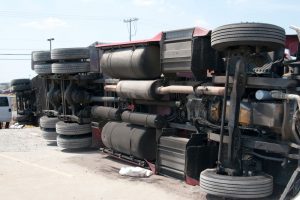 Many things have changed in the motor carrier industry since 1939 when the original hours-of-service (HOS) regulations were prescribed for truck drivers. Our roads are better designed, constructed, and maintained in a nationwide network to provide greater mobility, accessibility, and safety for all highway users. Vehicles have been dramatically improved in terms of design, construction, safety, comfort, efficiency, emissions, technology, and ergonomics. These factors, combined with years of driver fatigue and sleep disorder research, have led to a revision of the HOS regulations for drivers, the most important component of trucks operating on the highway.
Many things have changed in the motor carrier industry since 1939 when the original hours-of-service (HOS) regulations were prescribed for truck drivers. Our roads are better designed, constructed, and maintained in a nationwide network to provide greater mobility, accessibility, and safety for all highway users. Vehicles have been dramatically improved in terms of design, construction, safety, comfort, efficiency, emissions, technology, and ergonomics. These factors, combined with years of driver fatigue and sleep disorder research, have led to a revision of the HOS regulations for drivers, the most important component of trucks operating on the highway.
Hours of Service Regulation:
These regulations only apply to property carriers and drivers. Passenger carriers and drivers will continue operating under the existing rules while fatigue issues specifi c to the passenger carrier industry are assessed.
Sleeper Berth Exception: Drivers may split on-duty time by using sleeper berth periods, but must comply with the new hours-of-service rules. These drivers may accumulate the equivalent of 10 consecutive hours off-duty by taking a combination of at least 10 consecutive hours off-duty and sleeper berth time; or by taking 2 periods of rest in the sleeper berth, provided:
Industry Exceptions: Oil fi eld operations, ground water well drilling operations, construction materials and equipment operations, and utility service vehicle operations must comply with the new 11-hour driving, 10 consecutive hours off-duty, and 14-hours on-duty requirements of the new rule. However, the 24-hour restart provisions applicable to these operations remains in effect.
Agricultural Exemption: Agricultural operations retain their current statutory exemption from driving time requirements for transportation occurring within a 100 air-mile radius of a farm or distribution point during planting or harvesting season within each State, as determined by the State.
